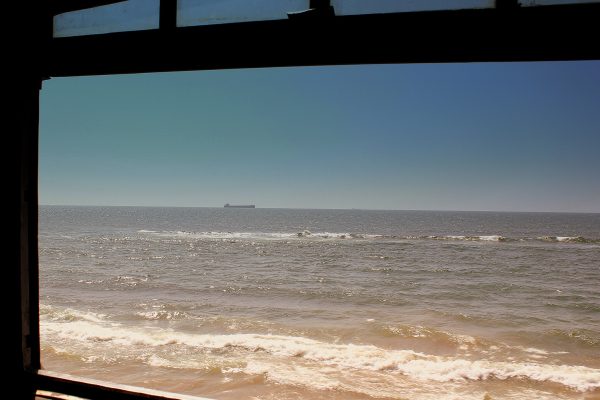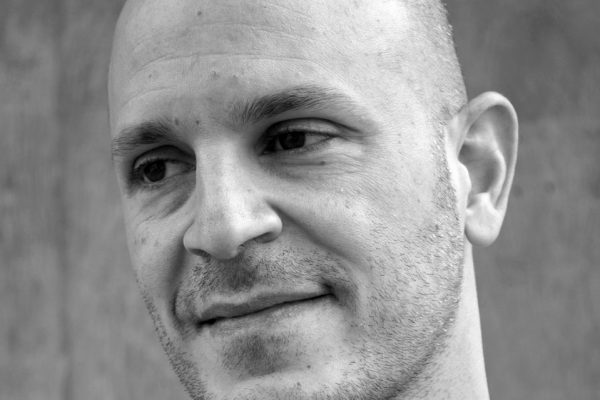Ferguson, #Ferguson; Maidan Nezalezhnosti, Euromaidan; Zuccotti Park, Occupy Wall Street. Places are becoming more than themselves, and the ideas certain places represent are changing the lives of people inside and outside their physical limits. How does it happen? How does occupation create a place, rather than simply control it? The St. Louis County Police are using tear gas, armored personnel carriers, and live ammunition to occupy a burned-out Quik Trip whose importance comes almost exclusively from its political and conceptual potency as the site of Michael Brown’s death.
The violence of the struggle over this place raises many questions that center around the power to speak. The reason the community wants to come to the Quik Trip—and the reason the police refuse to allow them to do so—is that it is a site of great meaning, and a platform for powerful speech. How does a place like this, created by an act of violence against Mike Brown, become a weapon of resistance against the suppression of voices? Questions about creation and voice are also questions of poetics: there might be a certain kind of answer to these questions available in the work of poets, especially poets who have to struggle to speak and be heard.
I am a native of St. Louis; I grew up about nine miles from Ferguson in the majority-white suburb of Clayton, and my experience there has convinced me of the economic, institutional, and individual racism of daily life in St. Louis County. I am also a teacher of Chinese literature and culture, a person trained to listen for the ways Chinese writers react to and resist the political, material, and cultural oppressions that plague them—so when I was following #Ferguson on Twitter, I was doing so while reading the Nameless Lake poems of contemporary Chinese poet Zang Di. These two sets of events, the demonstrations and the poems, both struggle for the power of the voice of place: I am struck by the relevance of one to the other, and the translatability of their ultimately local poetics.
Zang Di is a Beijing native who tested into Beijing University in 1983, and since then he has been a student, graduate student, and professor of poetry on the same campus. His oeuvre is substantial, including seven celebrated collections and over a thousand poems. Almost ten percent of those—about a hundred of his published works—are about a single lake on the campus of Beijing University called Nameless Lake or Weiming Hu. I’ve been to Nameless Lake: it is lovely. A repurposed part of the Qing emperors’ pleasure gardens, it is now the heart of the campus, and it has always struck me as one of the more peaceful parts of a very chaotic and dirty city. Although Zang Di talks at times about the lake in a sentimental way, as a kind of partner or object of affection, his poems are often more textured and rough. One of my favorites was completed in 1996, but to the best of my knowledge it has never been translated. It starts like this:
Fake passion can’t stop it from freezing.
In the winter, it’s one of Beijing’s ice rinks,
a kind of unfortified public arena,
wide open, facing the academic sketches of love.
The piece reaches its tendrils out into the place swiftly, and in a number of ways. On a physical level, the poem observes a real phenomenon: the lake really does freeze and people really do ice skate on it in winter—they also use a kind of skate-bottomed chair that you can pole around on the ice. Socially, the poem teases the awkward young lovers who escape from their dorms for semi-private assignations on the lake’s bank, but it also suggests impatience with the art students who make repetitive, unimaginative renditions of the lake for their classes.
Describing Nameless Lake as an “unfortified public arena” insinuates comparison with another public space, one that has been powerfully fortified and closed off from real passion—Tiananmen. Beijing University was the home campus of many of the Tiananmen protestors, and the crackdown after the protests fell heavily on the school’s faculty and students, making it seem in 1989 as if the campus was as sealed off and negated as Tiananmen itself. It is not my place to say what the poem’s intent or message is with regards to the issues that surround Tiananmen: the words of the poem do not take us there physically, they take us instead to the border of the lake. But in this poem, and in many of Zang Di’s other poems, Nameless Lake is not an inert tableau for aesthetic appreciation: it is a fragile and contested field, a space that thrives under certain kinds of attention and energy and dissolves into mere scenery without them. Its understanding of the transformational potential of attention and occupation participates in the same dynamic as other recent political occupations of space, including Tiananmen, the Euromaidan, and Ferguson. Although it does so quietly, it inserts and shapes the public into the space around the lake. The poem’s final line is a mix of hope and criticism, comparing the community on the lakeside to a person with one eye on the real problem, and one blind eye rolling off towards the white noise of academic detail. If you are looking at it in the right way, the place comes to mean something; otherwise, you might as well be staring off into space. The question is not simply how much one cares about a place, but also how one cares about it.
The difference between inattention, attention, and the right kind of care is fairly clear when one compares my hometown with Nameless Lake. The heart of St. Louis is half-abandoned, half-suffering, and what surrounds it is torn into pieces by the force of partially obscured antipathies, economies, and histories. Some residents simply cannot believe that it is a place that could want or need a new civil rights movement; to others, the events in Ferguson are years too late.
The last time I saw St. Louis in a poem was in one by Patricia Lockwood that starts: “Of all living monuments, [The Arch] has the fewest / facts attached to it.” That felt precisely right to me. Nothing attaches to the monuments of St. Louis, I thought, no hope, no rage, no history. Meanwhile, next to Nameless Lake, Beijing University maintains the hundred-year old Boya Tower. In the winter, they paint the individual tree trunks around it to ward off insects. Zang Di’s poetic practice is the conceptual or spiritual analog to this kind of care, and when I read his pieces sometimes I wish that my hometown had what he gives to Nameless Lake. Who was the last person who wrote a hundred poems about St. Louis? Has such a thing ever happened?
It has happened: the strange Teflon anonymity of St. Louis, to which no facts or stories attach, is a quality neither of the land nor of the community. It is a product of white silence. St. Louis’s poets are hip-hop artists and rappers, and they almost universally insist on their connection to their home, their area code, their place. In “Louminati” (the Lou is for St. Louis), Tef Poe compares his community to that of the North Africans under Roman occupation. The East St. Louis duo SNS lays a verbal snapshot of life in their neighborhood over a recording of an older man talking about fear in the city; every survival story, they say, is a minor miracle. The value of an unharmed, whole, young black person is clearest, though, rawest and most prescient, in St. Louis rapper Kenny Knox’s Tribute to Trayvon Martin, which promises that these memorial T-shirts and these grieving parents will be the last, and that the riots come next. (Ferguson is the hometown of Tracy Martin, Trayvon’s father.) In Knox’s piece the production of art exists as an action on a spectrum with other actions: songs, T-shirts, marching, angry songs, violent protest, riot, war. The methods intensify until they succeed in ideologically producing St. Louis, and the rest of America, as they are in fact: a black space, a mixed space. As Tef Poe says, “the bullet or the motherfucking pencil.”
The long-overlooked narratives and histories that are now finding outlets and readers inside and outside Ferguson are a function of the violence, a result of them; the voices that were ignored by white communities before physical action are now being heard. Ironically, the violence of the attempts to silence these voices makes a strong argument for their vitality and necessity: you can feel their power in the marks of their suppression just like you can feel the energy lost at Nameless Lake when it is stifled or drowned out by noise.
As is often the case for contemporary poetry, we realize in St. Louis that we were not short on poems, but instead on readers who are careful and thoughtful enough to recognize the reality of the poems we have. The SNS song I linked to above seems, at times, to be addressed to affluent communities outside East St. Louis: when you are at home eating chicken soup, they say, remember that we are out here. I don’t believe that audience has heard or answered them, yet.
So I turn back to Zang Di with a less steady insistence on the power of voice in the absence of the listening ear. Perhaps it is not Zang’s speaking and making that are the exclusive producers of the Nameless Lake; perhaps it is his steady, patient observation of the place that allows him to reveal it as it already was. He understands the school community is torn between the self-serving and the civic, the libidinal and the intellectual, the “glossy paired bodies” of the young lovers and the “overflowing ceremonial vessel,” the “mirror” of the lake. The weight of his finger on the scale is light because he has listened to the people of the place he occupies. His poetry reacts to them; the place is then produced by his thousands of readers and listeners, both at Beijing University and elsewhere, when they take in the poetry and let it transform the way they occupy their space.
Near the end of the poem excerpted above, the speaker hears a voice that “sounds like a sophomore on the far bank // lisping immortal Shelley with a thick tongue.” The speaker listens to her read, then takes her down in another book, writes out his ambivalence about her and his hope for her. He addresses her, and he has put that address in the same library where she checked out her Shelley, just three hundred meters away. Around the water, over it, there is a call and response, an exchange that founds a union.








